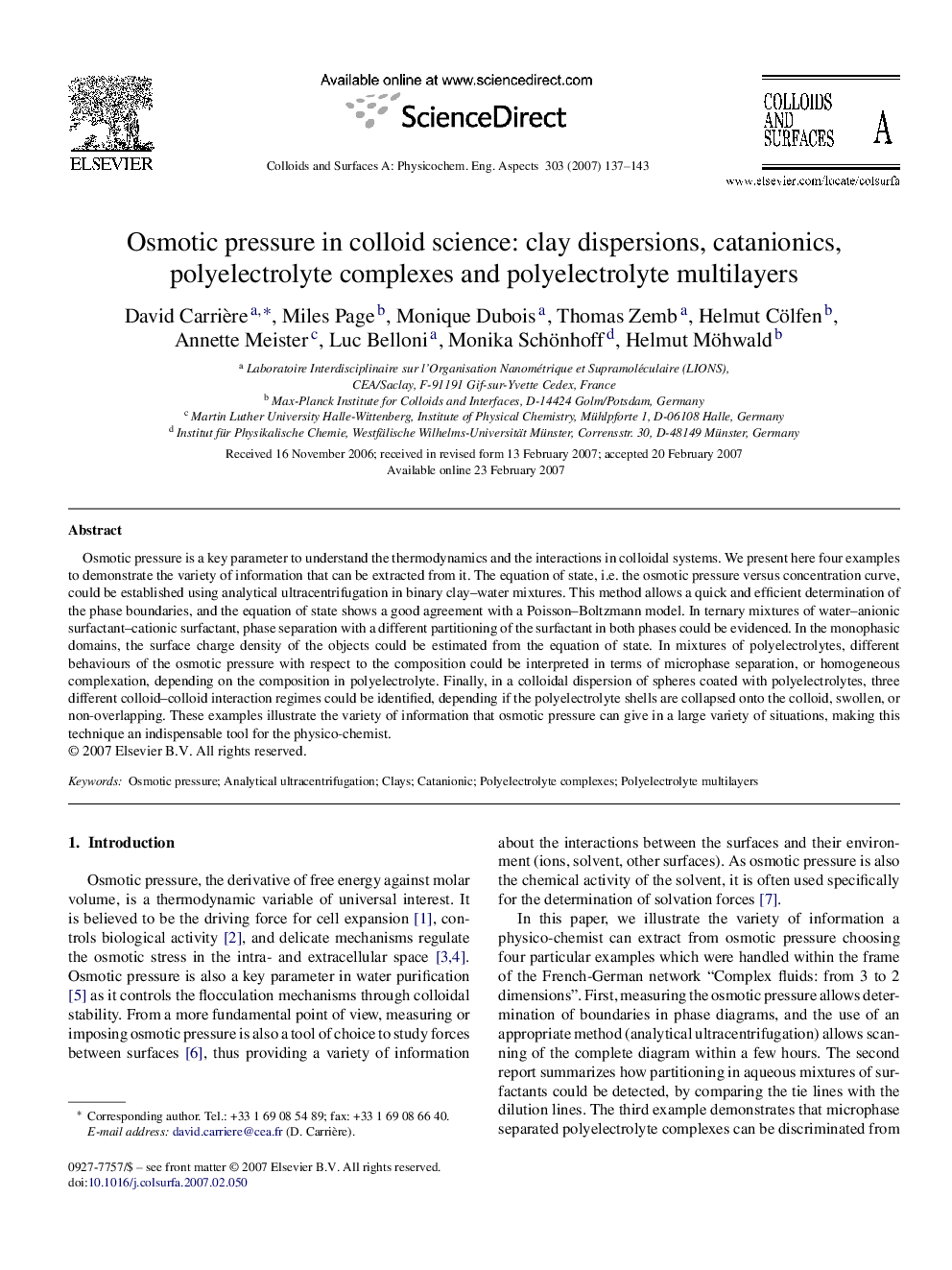| کد مقاله | کد نشریه | سال انتشار | مقاله انگلیسی | نسخه تمام متن |
|---|---|---|---|---|
| 597514 | 1454068 | 2007 | 7 صفحه PDF | دانلود رایگان |

Osmotic pressure is a key parameter to understand the thermodynamics and the interactions in colloidal systems. We present here four examples to demonstrate the variety of information that can be extracted from it. The equation of state, i.e. the osmotic pressure versus concentration curve, could be established using analytical ultracentrifugation in binary clay–water mixtures. This method allows a quick and efficient determination of the phase boundaries, and the equation of state shows a good agreement with a Poisson–Boltzmann model. In ternary mixtures of water–anionic surfactant–cationic surfactant, phase separation with a different partitioning of the surfactant in both phases could be evidenced. In the monophasic domains, the surface charge density of the objects could be estimated from the equation of state. In mixtures of polyelectrolytes, different behaviours of the osmotic pressure with respect to the composition could be interpreted in terms of microphase separation, or homogeneous complexation, depending on the composition in polyelectrolyte. Finally, in a colloidal dispersion of spheres coated with polyelectrolytes, three different colloid–colloid interaction regimes could be identified, depending if the polyelectrolyte shells are collapsed onto the colloid, swollen, or non-overlapping. These examples illustrate the variety of information that osmotic pressure can give in a large variety of situations, making this technique an indispensable tool for the physico-chemist.
Journal: Colloids and Surfaces A: Physicochemical and Engineering Aspects - Volume 303, Issues 1–2, 1 August 2007, Pages 137–143